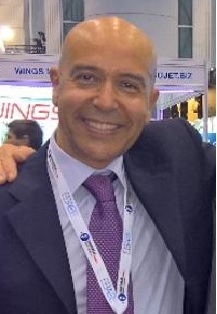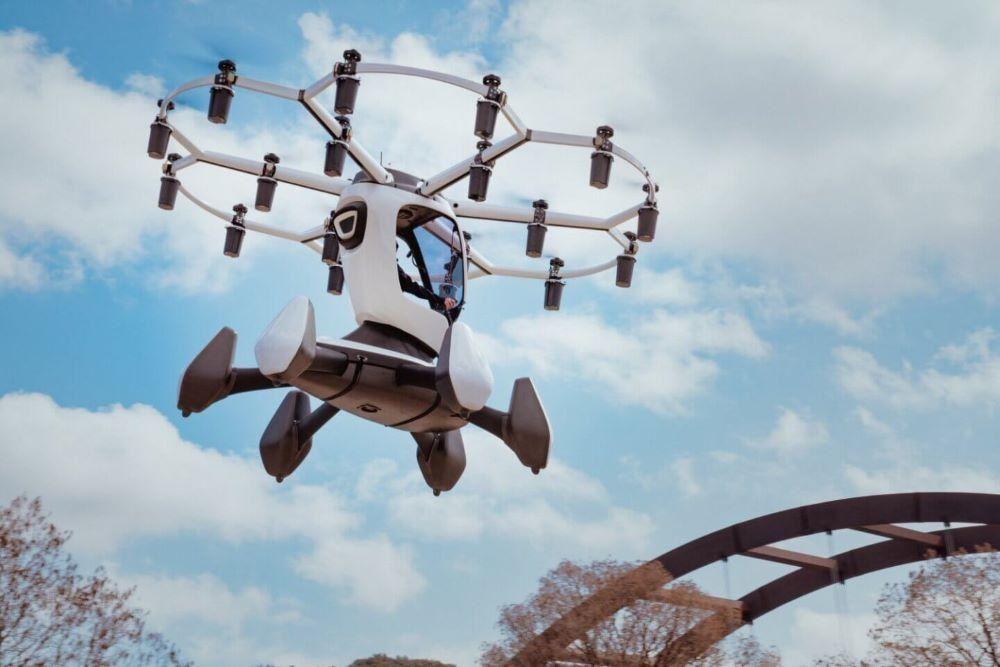See us at MRO Asia Pacific 2025
LIFT Hexa Episode Highlights Risk Of eVTOL Public Demos
Details
More Products & Services
Products & Services
Home - Aviation Group Marketing
Aviation Week Network
120 data points on over 156,000 commercial and business aviation aircraft, including military transports. Discover the most trustworthy resource for the complete aircraft history, plus ad hoc reports, month-over-month trend analysis and details on expected deliveries through 2050.
Aerospace | Aviation Week Network
Aviation Week Network
https://aviationweek.com/themes/custom/particle/dist/app-drupal/assets/awn-logo.svg
People

Andrea Rossi Prudente
Aviation Week Network

Becca Balmes
Aviation Week Network

Belinda Tan
Aviation Week Network

Brian Everstine
Aviation Week Network
Editor

Eddie Krankowski
Aviation Week Network
Assistant Manager, Tradeshows

erving dockery
Aviation Week Network

Lisa Tan
Aviation Week Network
Senior Marketing Manager

Mark Thomas
Aviation Week Network
Description
For developers of electric vertical-takeoff-and-landing (eVTOL) aircraft, large public demonstrations are viewed as an important means of generating interest from key stakeholders in government, industry and the general public.
That's only if everything goes according to plan, however. If things go south, the demonstrations can not only backfire for the OEMs hoping to spotlight their products–they can cast a temporary pall over the eVTOL industry in general, at least for the communities that host them.
The latest example involved U.S. startup LIFT Aircraft and its single-seat Hexa multicopter, which experienced failure of one of its powertrain units during a public demonstration flight at the Osaka World Expo last month. While doubtless an embarrassing episode, it paradoxically reinforces LIFT's safety bona fides, as the highly-redundant, 18-motor aircraft continued to fly in a fully controlled manner and performed a normal landing. While Japanese media reports focused on falling components, the parts that detached and dropped were two 80-gram halves of a plastic cover that "did not pose a risk to spectators," the company tells Aviation Week.
LIFT said in a statement that Japanese regulators determined the event "did not constitute an accident or incident" that would require an investigation, as the component failure "did not represent a significant safety risk." The startup's engineering team has "conducted a comprehensive investigation to identify the root cause and is implementing measures to prevent similar episodes in the future." LIFT also said it expects to resume its exhibition flights at the Expo "in the near future." "HEXA was designed to be incredibly fault tolerant with multiple redundant systems specifically to address potential component failures, and we're pleased that these systems performed exactly as intended," a company spokesperson said.
While not rising to the level of an accident or an incident, Japanese authorities nonetheless temporarily canceled LIFT's flying until further notice.
But even before the flight, the scope of the Osaka demonstrations had already been downgraded in late 2024. Originally, several air taxi OEMs had planned to carry paying passengers in partnership with local partners, although Japanese authorities ultimately decided against allowing passengers due to ongoing safety concerns, and major airlines like ANA and Japan Airlines responded by canceling their own plans to team up with Joby and Archer, respectively, during the event.
So far, none of the OEMs have officially backed out. Joby insists that it still plans to fly there around September, and Japanese startup SkyDrive says its plans are similarly unaffected. Even so, none of the participating OEMs–possibly excluding Volocopter–will have a type-certified vehicle in time for the event. LIFT's Hexa, an ultralight aircraft under the FAA's regulations, does not require type certification to operate.
If the Osaka situation sounds familiar, it's because a nearly identical scenario played out at the 2024 Paris Olympics, when Volocopter was forced to downgrade its plans to carry paying passengers back and forth between the air show and a floating barge on the River Seine. In the end, local authorities determined the startup would only be allowed to perform an uncrewed demonstration at a test vertiport using its 2X demonstrator, citing safety concerns and the lack of a certified aircraft.
In Volocopter's case, the debacle badly damaged its reputation, and has been widely seen as a contributing factor to its financial woes, and ultimately, its insolvency and sale to Wanfeng of China for just €10 million ($11.3 million) in March–a minuscule fraction of the hundreds of millions it has spent in its development and certification program to date.
Given the scaled-back state of the Osaka Expo, the next best opportunity to showcase eVTOL air taxis to the masses may be the 2028 Los Angeles Summer Olympics. Considered a key plank of the FAA's Innovate28 plan to integrate eVTOLs and drones into the National Airspace System, the event promises to see Archer and Joby fly passengers including athletes, celebrities and dignitaries around the congested city, hopefully proving out the time savings and efficiency gains of the urban air mobility (UAM) concept to millions of attendees and countless viewers around the world.
By 2028, both Archer and Joby should have type-certified aircraft that have already begun commercial services in several key markets, and regulators will hopefully be comfortable and familiar enough with their aircraft to permit a large-scale passenger service that finally lives up to the industry hype.
But until then, OEMs will be better served to keep pressing forward with their flight test and certification efforts, rather than box themselves in with commitments they may be unable to keep, in many cases due to factors entirely beyond their control.
That's only if everything goes according to plan, however. If things go south, the demonstrations can not only backfire for the OEMs hoping to spotlight their products–they can cast a temporary pall over the eVTOL industry in general, at least for the communities that host them.
The latest example involved U.S. startup LIFT Aircraft and its single-seat Hexa multicopter, which experienced failure of one of its powertrain units during a public demonstration flight at the Osaka World Expo last month. While doubtless an embarrassing episode, it paradoxically reinforces LIFT's safety bona fides, as the highly-redundant, 18-motor aircraft continued to fly in a fully controlled manner and performed a normal landing. While Japanese media reports focused on falling components, the parts that detached and dropped were two 80-gram halves of a plastic cover that "did not pose a risk to spectators," the company tells Aviation Week.
LIFT said in a statement that Japanese regulators determined the event "did not constitute an accident or incident" that would require an investigation, as the component failure "did not represent a significant safety risk." The startup's engineering team has "conducted a comprehensive investigation to identify the root cause and is implementing measures to prevent similar episodes in the future." LIFT also said it expects to resume its exhibition flights at the Expo "in the near future." "HEXA was designed to be incredibly fault tolerant with multiple redundant systems specifically to address potential component failures, and we're pleased that these systems performed exactly as intended," a company spokesperson said.
While not rising to the level of an accident or an incident, Japanese authorities nonetheless temporarily canceled LIFT's flying until further notice.
But even before the flight, the scope of the Osaka demonstrations had already been downgraded in late 2024. Originally, several air taxi OEMs had planned to carry paying passengers in partnership with local partners, although Japanese authorities ultimately decided against allowing passengers due to ongoing safety concerns, and major airlines like ANA and Japan Airlines responded by canceling their own plans to team up with Joby and Archer, respectively, during the event.
So far, none of the OEMs have officially backed out. Joby insists that it still plans to fly there around September, and Japanese startup SkyDrive says its plans are similarly unaffected. Even so, none of the participating OEMs–possibly excluding Volocopter–will have a type-certified vehicle in time for the event. LIFT's Hexa, an ultralight aircraft under the FAA's regulations, does not require type certification to operate.
If the Osaka situation sounds familiar, it's because a nearly identical scenario played out at the 2024 Paris Olympics, when Volocopter was forced to downgrade its plans to carry paying passengers back and forth between the air show and a floating barge on the River Seine. In the end, local authorities determined the startup would only be allowed to perform an uncrewed demonstration at a test vertiport using its 2X demonstrator, citing safety concerns and the lack of a certified aircraft.
In Volocopter's case, the debacle badly damaged its reputation, and has been widely seen as a contributing factor to its financial woes, and ultimately, its insolvency and sale to Wanfeng of China for just €10 million ($11.3 million) in March–a minuscule fraction of the hundreds of millions it has spent in its development and certification program to date.
Given the scaled-back state of the Osaka Expo, the next best opportunity to showcase eVTOL air taxis to the masses may be the 2028 Los Angeles Summer Olympics. Considered a key plank of the FAA's Innovate28 plan to integrate eVTOLs and drones into the National Airspace System, the event promises to see Archer and Joby fly passengers including athletes, celebrities and dignitaries around the congested city, hopefully proving out the time savings and efficiency gains of the urban air mobility (UAM) concept to millions of attendees and countless viewers around the world.
By 2028, both Archer and Joby should have type-certified aircraft that have already begun commercial services in several key markets, and regulators will hopefully be comfortable and familiar enough with their aircraft to permit a large-scale passenger service that finally lives up to the industry hype.
But until then, OEMs will be better served to keep pressing forward with their flight test and certification efforts, rather than box themselves in with commitments they may be unable to keep, in many cases due to factors entirely beyond their control.

Share
Recent Chats
Share via email
Future: handle WhatsApp here
Future: handle LinkedIn here
Future: handle Twitter here
SUBMENU HERE
Share via Chat
Copy Link

